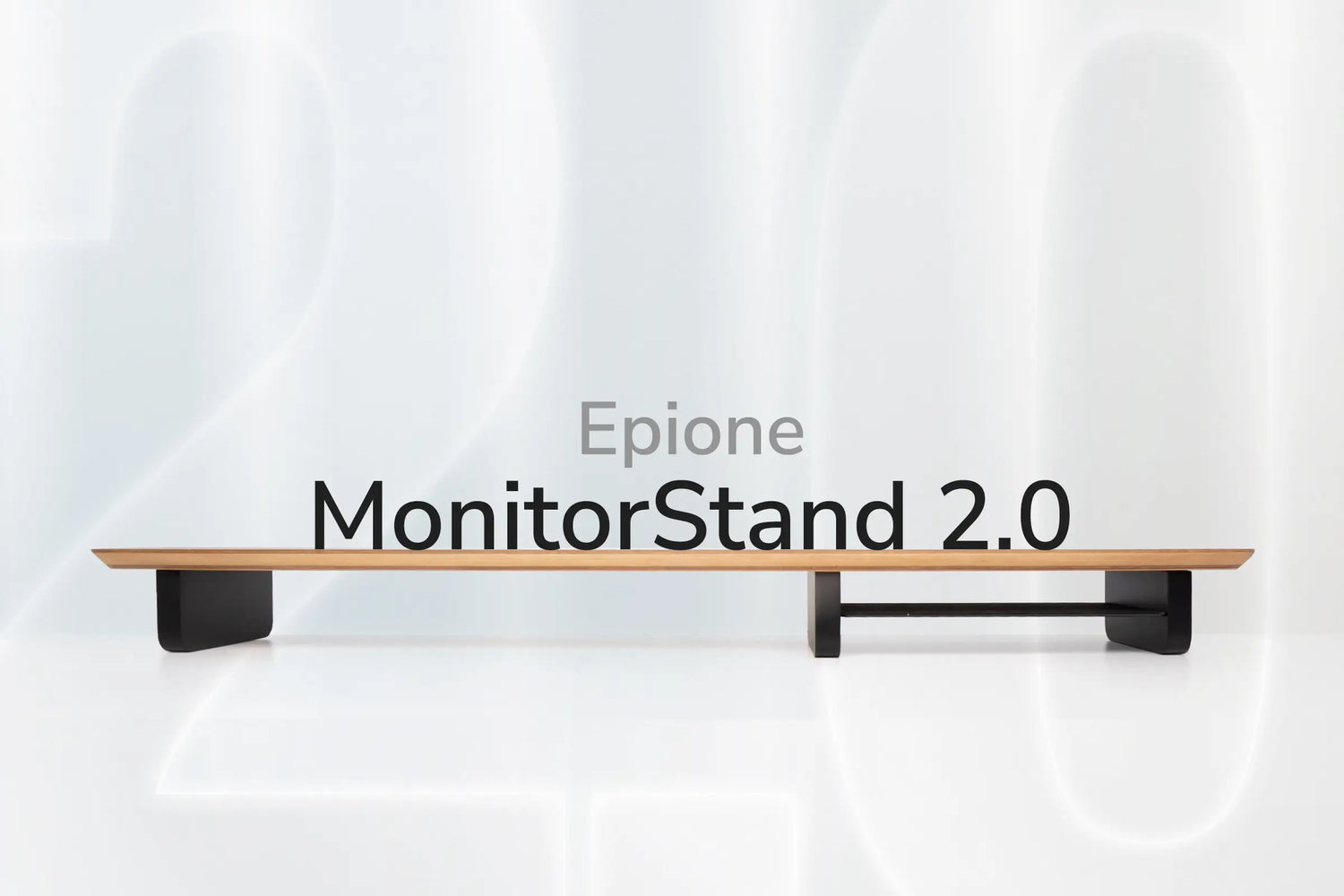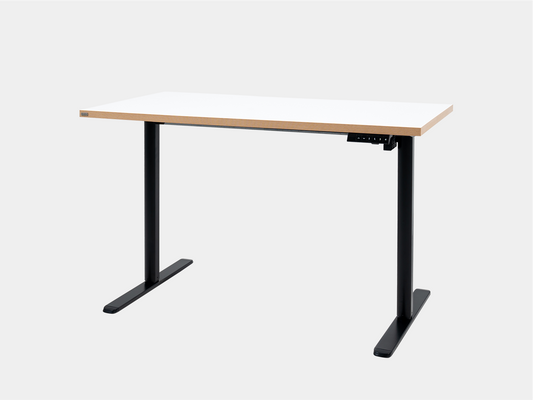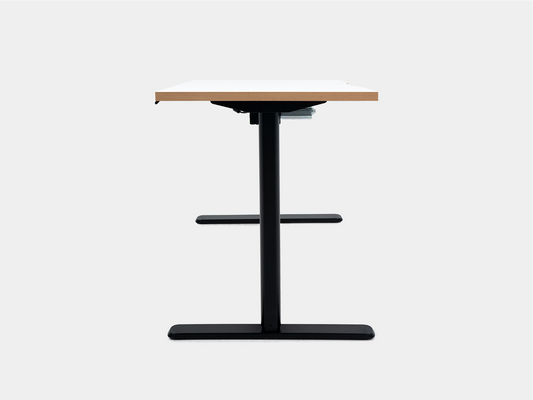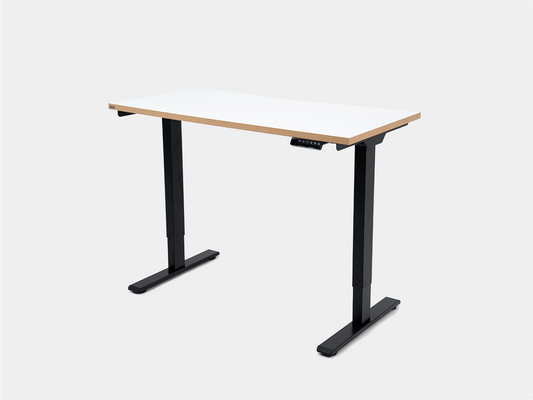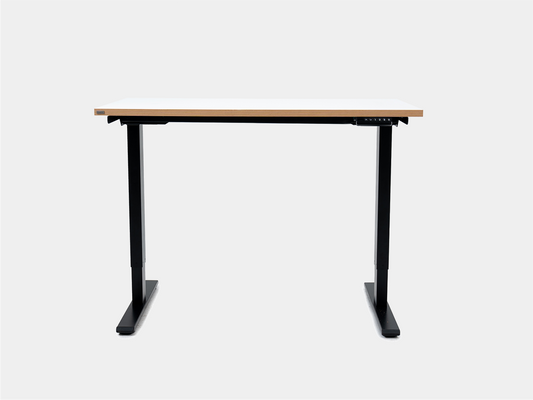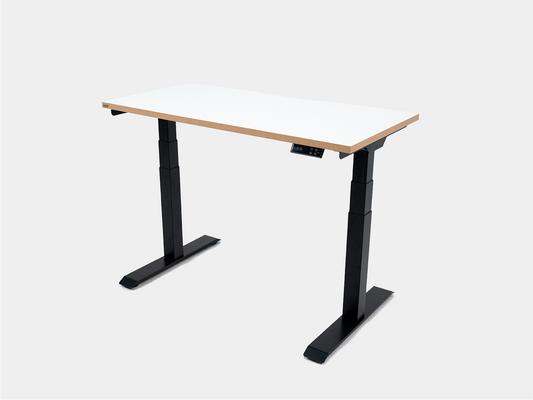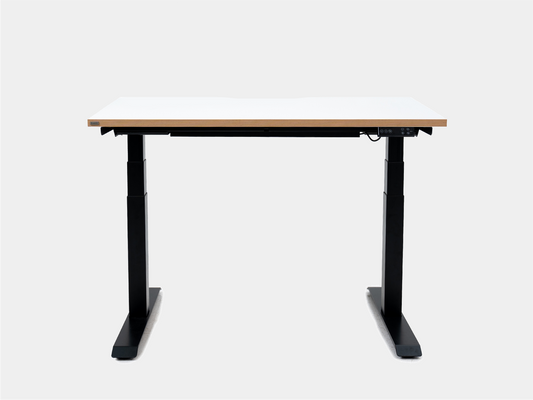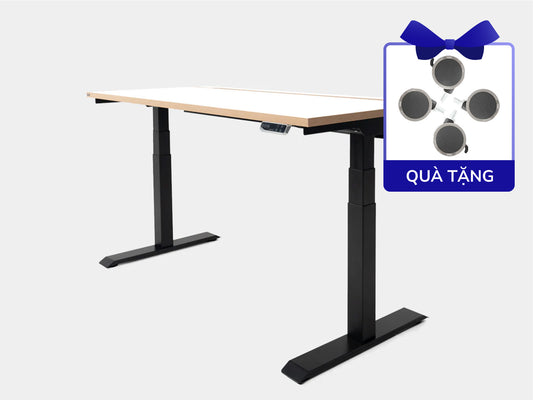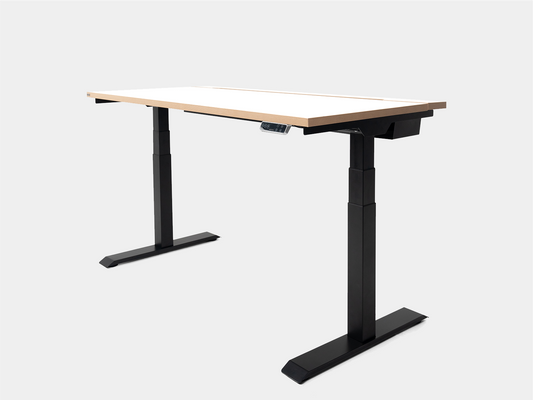The human body is designed to move, and sitting still for long periods of time in front of a computer screen can lead to many serious health consequences.
With her expertise and extensive experience in the medical field, Dr. Thao Nguyen's advice on applying ergonomic principles to desk design will help you achieve a comfortable working posture, minimize the risk of musculoskeletal diseases, and improve work performance and quality of life.
1. Make sure your desk is within reach

The first factor to consider when choosing a desk is the height that is suitable for your body when sitting. Make sure your feet are at least 5-10cm from the table top, parallel to the ground, avoid choosing tables with drawers or cabinets that are too large under the table, hindering leg stretching and blood circulation. Your two elbows should be placed perpendicular to the table top and your wrists should be in line with the keyboard. The desk should be made of sturdy material, with good load-bearing capacity to ensure safety during use; the table area needs to be large enough for you to arrange your work equipment neatly and scientifically.
A perfect choice for those who want to flexibly change their working posture is to use a lift table. You can easily adjust the height of the table to suit your needs, helping you switch between sitting and standing positions every 1-2 hours of work. Alternating between standing and sitting positions helps reduce pressure on the spine and back, improve blood circulation and increase work efficiency.
2. Choose a chair as an investment in your health

According to Dr. Thao Nguyen, choosing the right office chair is a smart investment for your health and work efficiency. The chair should be at the right height so that both feet can be placed flat on the ground, thighs parallel to the floor and knees form a 90-degree angle. If the chair is too high for your feet to touch the ground, use a footrest to tilt your pelvis back, lean on the chair and relax your lower back muscles better.
The chair should also be able to adjust the height and tilt so you can customize your sitting position to suit your body, with a backrest that hugs your body and a headrest and armrests to help you relax your neck, arms and shoulders. When sitting, avoid a chair that is too high or too low, causing your shoulder muscles to tense and strain when sitting for a long time.
3. Correct sitting posture helps reduce pressure on the spine

Many people think that sitting at 90 degrees is the best position for your back. However, this is a misconception. Sitting at 90 degrees puts a lot of pressure on your spine and discs, leading to pain. Instead, you should lean back to an angle of about 110 degrees. This position helps reduce pressure on your spine and discs, while also helping your back muscles relax.
Be careful not to let your body bend forward (80 degree posture), as this can increase the pressure on your spine by up to 185% of your body weight. This can lead to spinal degeneration, disc herniation and other health problems.
4. Keep a suitable distance between your eyes and the screen

To maintain a good sitting posture, the monitor should be placed about an arm's length away from your eyes, with the highest edge of the monitor at eye level, so that when you look directly at the screen, your vision will be slightly downward. This position helps the eye muscles to be most relaxed, reducing the risk of eye strain and dry eyes. If the monitor is placed too high, the neck will reflexively tilt upward to bring the eyes to a comfortable position, so you will feel both neck and eye fatigue after only 1-2 hours of work.
In addition, you should pay attention to adjusting the brightness and color temperature to suit the working environment. Screen light that is too bright or too dark can be harmful to the eyes. The screen color temperature should be adjusted slightly yellow to limit the blue wavelengths that are harmful to the eyes. You should choose a screen with anti-glare capabilities to limit the impact on the eyes due to reflected light, helping you see the image more clearly, especially when working in a bright environment.
5. Limit light shining directly into the eyes

When setting up a work corner, many people have the habit of placing their desk in a position that receives direct light. Although this helps us stay awake, strong light shining directly into the eyes will cause the pupils to constrict, making the screen dim and forming a squinting reflex. Over time, this condition leads to dry eyes, eye strain and digital eye strain syndrome.
The ideal desk position is one where the light source shines from one side, creating comfortable viewing conditions for the eyes. When you need to step away from the screen to relax, you can also easily adjust the light to suit. You should also arrange the light from many different directions to avoid creating shadows and glare.
Finally, after each 30-60 minute work session, do some light exercise and stretch your body to relax the tense muscles in your neck, shoulders, and back. By following these principles, you can create a comfortable and safe working environment for yourself, protect your health, endurance, and improve your productivity.
